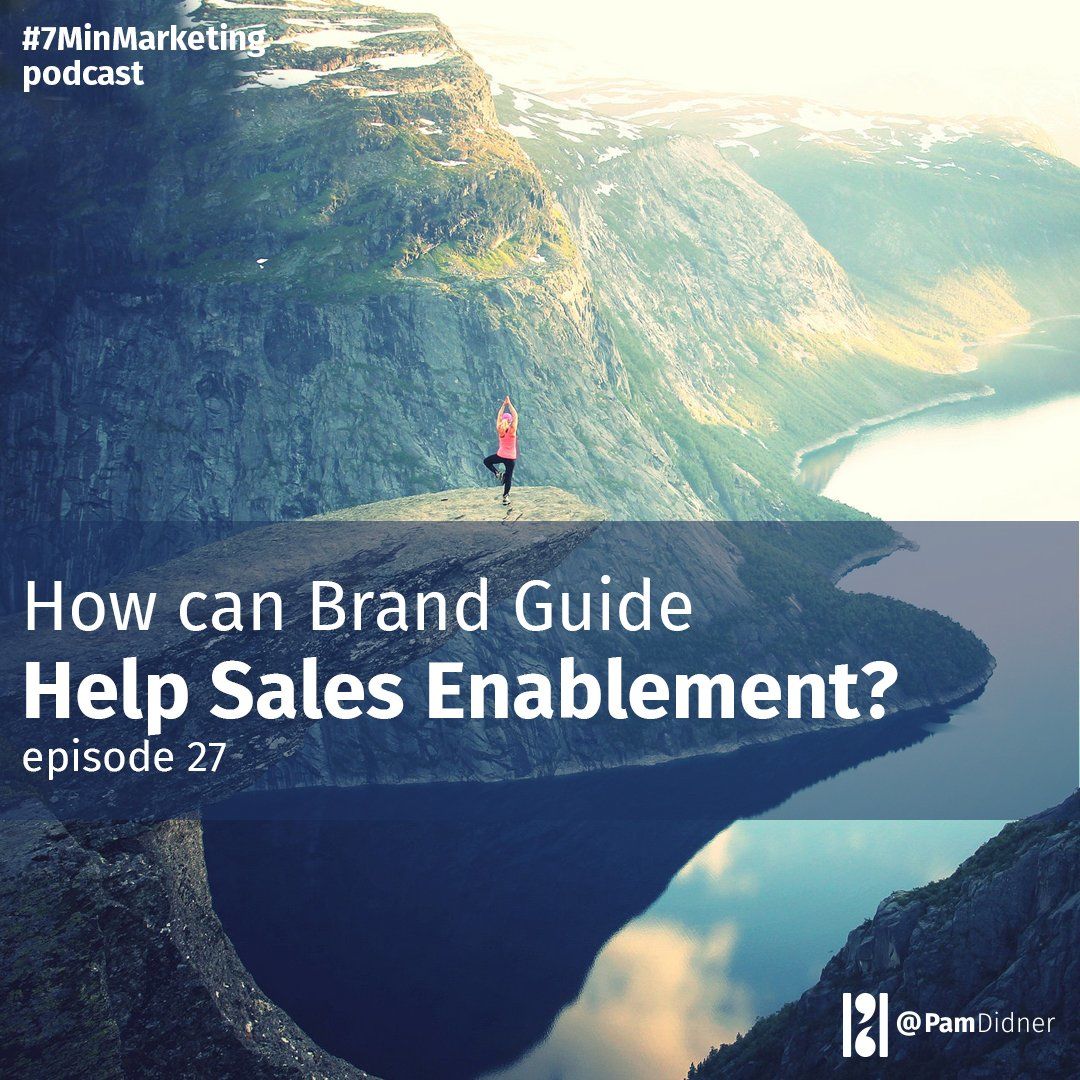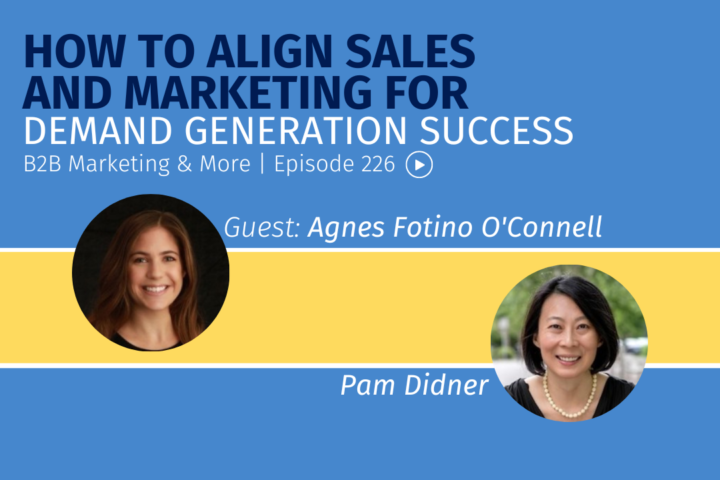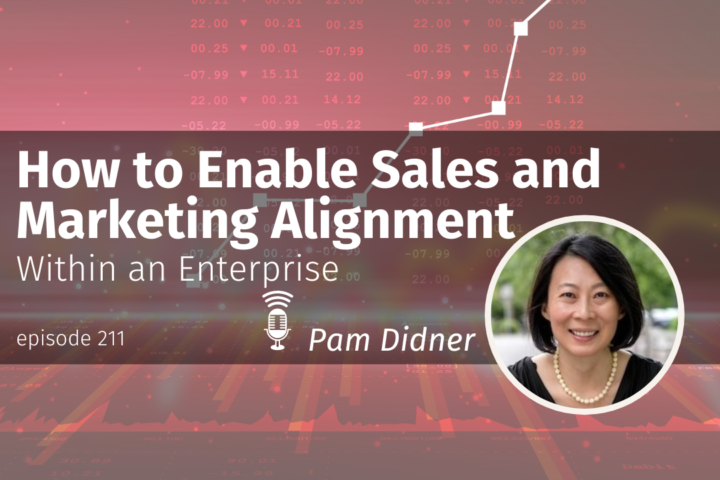
Welcome to another episode of 7-Minute Marketing with Pam. My name is Pam Didner, and I love sharing a little dose of B2B, digital and content marketing, seven minutes at a time.
A listener, Ally, working in a small software company with 2 marketing people doing everything from marketing to sales support. She is working on a brand guide to standardize not only the look-and-feel of outbound communications but also create the consistent layout for different formats of content output. Her sales team thinks the brand guide is a colossal waste of time. They feel that she should spend the money and budget on creating sales collateral. She asked how to demonstrate the value of a brand guide to her sales team.
Well, Ally, let me share with you a known ‘secret’: if the sales team had their wishes, they would love to see all the marketing budget focused on the bottom of the funnel and demand gen. But before we get to there, marketing needs to somehow find a way to make sure that people are actually aware of our products. Even for referrals and word-of-mouth, it starts with someone becoming aware of your products, using them, then referring or sharing with others. A good chunk of marketing’s job is to make sure that people are aware of our products and services.
As you already know, to do that, we need to reach our audiences several times. In a traditional world, customers need to see the ad 6-7 times before the brand makes an impression on them. In the digital world, it’s not only about frequency but also about a consistent experience. That consistency needs to be reflected in image selection, copywriting, content etc. To make all that happen, a brand guide is needed.
Brand guides are not only about logo usage, typography and color palettes. They should also include a brand persona, which relates the human attributes of your brand. Use specific adjectives and nouns to describe your brand personality. For people living in the US, you’re probably familiar with two ice cream brands: Breyers and Ben and Jerry’s. Both of them are part of the Unilever Conglomerates.
If you look at their package designs, Breyers brand persona is about family, tradition, quality, while Ben and Jerry’s is about individualism, quirky, wholesome and environmental friendly. Don’t take me wrong: Ben and Jerry’s is all about quality as well, but they chose to talk about quality in the context of individual flavors and sustainable food sourcing. These nouns and adjectives in brand guide will lead copywriting and image selection. For example: to show where their milk comes from: Breyers may show an image of a cow rolling the meadows peacefully, Ben and Jerry’s uses an animated image to show cows playing a guitar and having a great time. The brand personalities guide creative development.
So, how does this impact the sales team? I see it impacts sales teams in 3 ways:
- If sales reps create content, they need to understand the brand guide or use templates from it. Therefore, if you have templates for e-mail, presentation, blog post, product brief for sales team to use, incorporate them into the brand guide.
- To provide a consistent experience, sales’ training and development should also conform to the rules of the brand guide.
- Sales teams are the frontline interface of a brand. The reinforcement of brand and its values, occasionally, is complicated by how sales teams are recognized and incentivized. Compassionate brands do not reward greed. Exciting brands do not accept complacency. Sales wins are important, but it’s also important to be clear on how the sales team goes about it.
To summarize the brand guide’s impact on sales,
- Use the templates from the brand guide to deliver consistent experience
- Guide the design of training and development
- Consider brand’s personas and values to establish sales compensation.
The purchase journey from marketing to sales is a continuum. Customers may go back and forth between sales and marketing personnel or material, but the overall experience should stay the same. The content they receive from either sales or marketing should have the same look-and-feel with the same tone-and-manner. For complex sales, sales reps are the brand and the unique differentiator. Marketing creates a brand guide, but sales reps, account managers, customer service and support teams all shape the customer experience and bring brand promises to life. In order to do that, sales reps need to understand what their brand promises are.
Ally, I hope that I answer your question.
Back to my writing.
Send me your marketing questions via Twitter @pamdidner
Be well. Until next time.



